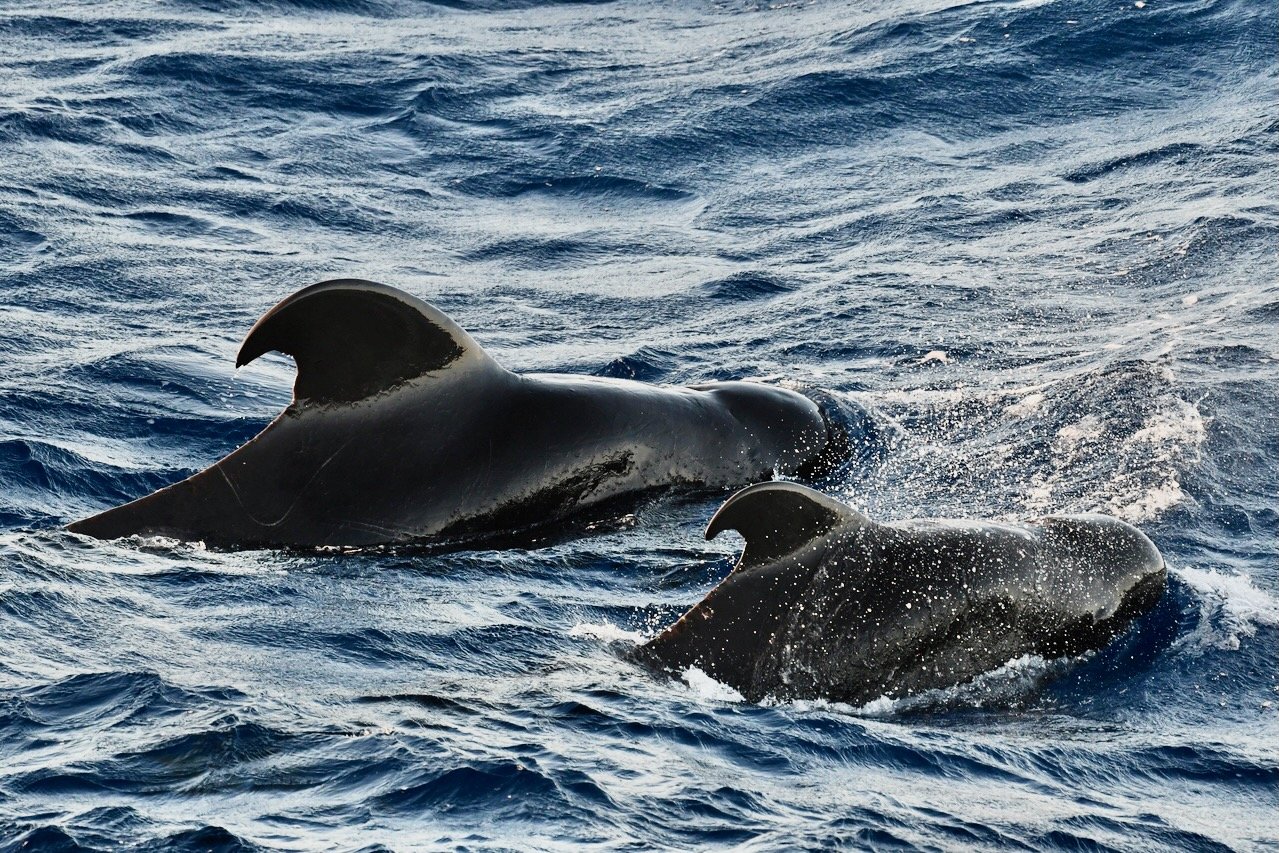"Mystery: The Whale That Went AWOL" by Mary Jane Schramm, Freelance Writer, Naturalist
The science team aboard the research vessel had been methodically surveying West Coast waters from Canada to Mexico, and was now off the California coast. It cruised along a biological “hot spot” where the Continental Shelf drops off to great depths, creating upwelling and an abundance of prey, attracting many creatures of all sizes. Suddenly, the whale observer raised his head from the giant “Big Eyes” binoculars mounted on the vessel’s flying bridge. He shouted, “Pilot whales at 2 o’clock!” and continued calling out rapid-fire details on group size and composition, directional heading, and behaviors, which the data-logging scientist quickly entered into a computer. Other researchers, normally jaded from years of whale observations, scrambled madly to see the rare species. The cruise plan had targeted for fine-scale study the waters of the Cordell Bank, Greater Farallones, Monterey Bay and the Channel Islands national marine sanctuaries, because of their exceptionally high productivity and large feeding aggregations of whales and seabirds, but this sighting was beyond belief. Why? These large (up to 24 ft. and 3 tons) bulbous-headed, black, dolphin-like creatures were short-finned pilot whales, “Globicephala macrorhynchus,” that had been mostly AWOL for decades!
Missing! Once commonly encountered off Southern California and northern Mexico, pilot whales roamed deep waters along the Continental Shelf. A herd of 100 were even considered resident around the Channel Islands, but dropped completely off the radar in 1982-83. This coincided with a severe warm water event, El Nino, which raised ocean temperatures and disrupted the entire West Coast food web, including squid spawning around the Channel Islands. Since then, sightings became so infrequent and broadly distributed along the coast that between 1988 and 1996 not a single verified sighting existed for the area. So, for decades El Nino was cited as the cause of their decline; that is, until some scientists stepped back, and examined sighting and stranding data going farther back, to the mid-20th Century. This broader view revealed patterns and other potential factors that seem to have been overlooked.
Suspicion! Marine biologists Thomas Jefferson and Alisa Schulman-Janiger thought that El Nino’s reduction of the whales’ primary prey species, squid, was only one factor, but that others may have previously impacted and continue to compromise the whales. In 2018, they concluded that “the disappearance of short-finned pilot whales from southern California in the early 1980s was almost certainly caused in part by the mortality of dozens of animals from fisheries by-catches and live-captures, in combination with additional removals from shootings by fishermen (with occasional mass strandings, some possibly anthropogenic, also contributing).” They also noted that the Channel Islands lie adjacent to a major U.S. Naval base in San Diego, and at least some mass strandings were likely associated with naval active sonar.
A Future? Today, the entire NOAA stock assessment population estimate for offshore and nearshore waters from California-Oregon-Washington stands at around only 836 despite stepped-up survey efforts along the U.S. West Coast and Baja California, Mexico, and per Jefferson et al., “no areas with pilot whale concentrations of a similar magnitude have been documented.” NOAA Fisheries and other agencies are currently working to reduce serious impacts from the drift gillnet and longline fisheries. How they will fare remains to be seen.
You can help by using the Monterey Bay Aquarium’s Seafood Watch card that will help you avoid seafood caught by methods that harm marine mammals. Pilot whales are fascinating, similar to killer whales in their social structure and possibly in their advanced intelligence. To learn more about this cryptic whale, visit https://www.fisheries.noaa.gov/species/short-finned-pilot-whale This video by a whale watching outfit in 2015 shows how these creatures swim and interact with the vessel and each other: https://youtu.be/Q-jrOaEljXY.
Images
• Top: Spyhopping may help locate concentrations of prey. Photo: NOAA..
• Middle: Sharply hooked dorsal fin unique to pilot whales Photo: NOAA.
• Bottom: Juvenile pilot whale with adults. Photo: NOAA.







